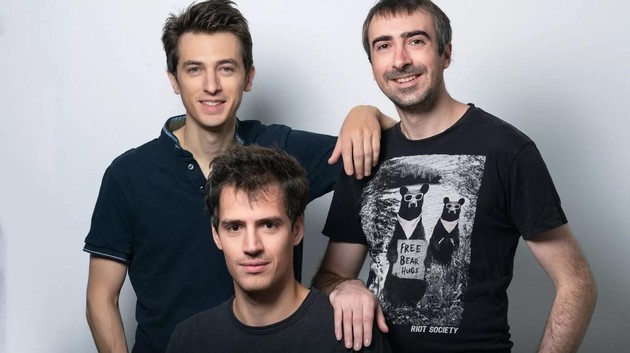
Arthur Mensch9(M),Guillaume Lampe(L),Timothee Lacroix(R)
Photo/Mistral- Renauld Khan
AI is booming, and the most talked-about company this week is Mistral AI, a European AI unicorn. On February 26, local time, Mistral AI released its latest flagship model, Mistral Large, which rivals OpenAI’s GPT-4 and Google’s Gemini Pro in performance, but costs only $22 million to train, about a fifth of GPT-4.
More importantly, Mistral AI announced a partnership with Microsoft, becoming the second company after OpenAI to offer large model services on Microsoft’s cloud platform Azure. In addition, Microsoft also invested about $16 million in Mistral AI. Although Microsoft’s investment amount is small, deploying Mistral Large model on Azure is equivalent to giving the company a very heavy vote of confidence.
After getting Microsoft’s approval, praises such as “European AI” and “above all models except OpenAI” came one after another, gaining a lot of exposure.
This is not the first time Mistral AI has “broken the circle” and entered the public eye. When it was founded in 2023, the “only seedling” of European AI had once made a small splash with its amazing performance of “4 weeks, 7 pages PPT, $113 million financing”.
Mistral AI was founded in April 2023, and in June of the same year, Mistral AI received 105 million euros (about $113 million) in seed funding; in December of the same year, it received another 385 million euros (about $415 million) in Series A funding. The investors in these two rounds include well-known Silicon Valley venture capital firms Lightspeed Venture Partners and Andreessen Horowitz (also known as a16z), tech giants Nvidia and Sequoia, former Google CEO Eric Schmidt, and French billionaire Xavier Niel, among others, with a valuation of $2 billion.
Mistral AI’s rapid growth is closely related to the AI credentials of its three founders. In 2023, Arthur Mensch, who was working on large models at Google’s artificial intelligence department DeepMind, left the company and joined forces with Timothee Lacroix and Guillaume Lampe, who worked at Meta’s Paris AI lab, to create their own AI company. The latter two were Mensch’s classmates during his student days. At that time, Mensch was just thirty years old, and the other two were of similar age.
Media reports show that Arthur studied at the Ecole Polytechnique and the Ecole Normale Superieure in Paris. His doctoral research focused on analyzing three-dimensional brain images from fMRI systems, enabling software to process up to millions of images. At the end of 2020, Arthur joined DeepMind and participated in the development of large language models, leading projects such as Retro, Flamingo and Chinchilla. Guillaume and Timothée co-led the development of Meta’s open-source large model LLaMa.
As for why they left Google to start their own business, Arthur explained that he didn’t like the team getting bigger and bigger, showing signs of bureaucracy and that he “didn’t want to develop those opaque technologies in large tech companies”. Timothée and Guillaume were tired of the internal competition for computing power.
Similar values and related “big company” experiences made Mistral AI take off quickly. Adhering to the principles of open source and cost saving, Mistral AI also has a touch of idealism that OpenAI had when it was founded. In its business plan in the spring of 2023, Mistral criticized the proprietary closed-source models led by American companies, saying that they were forming a “monopoly”, and that Mistral AI would release its initial AI system as open-source software, allowing anyone to use or modify it for free.
Mistral did exactly that at first. In September and December 2023, the company launched the small model Mistral 7B and the “mixed expert” architecture Mixtral 8x7B model, respectively, by directly posting magnet download links on social media. This was obviously very different from OpenAI’s closed approach in recent years.
However, as the scale expanded, Mistral AI’s style became more and more similar to OpenAI, and its latest flagship model Mistral Large adopted a closed-source route, neither open nor free. Arthur explained: “It is very delicate to find a balance between building a business model and sticking to our open source values. We want to create new things, new architectures, but also provide some additional products and services to our customers.”
In the era of large models, computing power and capital have become decisive factors. Under the pressure of expanding scale and investors, whether Mistral AI can take a different path from OpenAI is worth looking forward to.


 川公网安备 51019002001991号
川公网安备 51019002001991号





